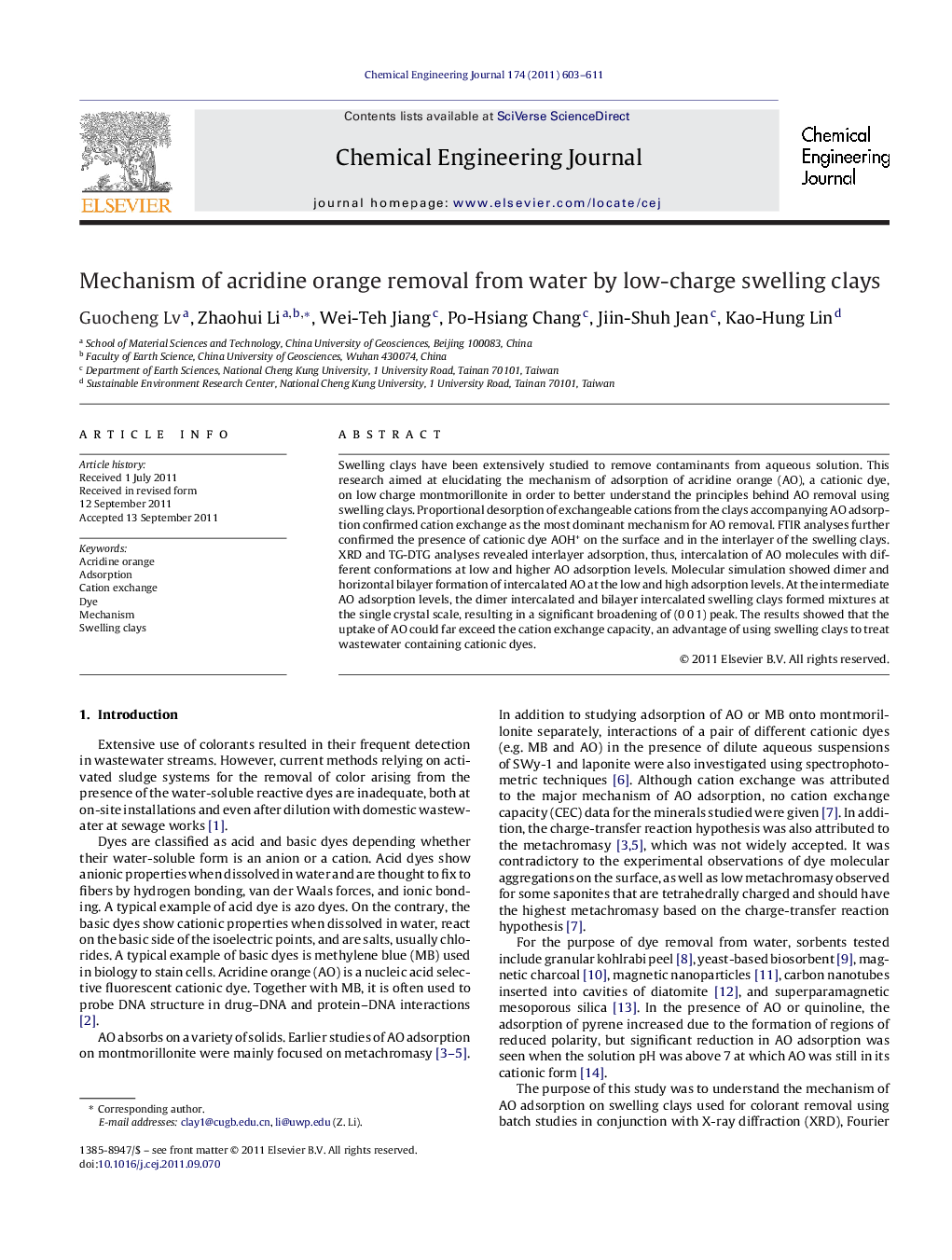| کد مقاله | کد نشریه | سال انتشار | مقاله انگلیسی | نسخه تمام متن |
|---|---|---|---|---|
| 151103 | 456462 | 2011 | 9 صفحه PDF | دانلود رایگان |

Swelling clays have been extensively studied to remove contaminants from aqueous solution. This research aimed at elucidating the mechanism of adsorption of acridine orange (AO), a cationic dye, on low charge montmorillonite in order to better understand the principles behind AO removal using swelling clays. Proportional desorption of exchangeable cations from the clays accompanying AO adsorption confirmed cation exchange as the most dominant mechanism for AO removal. FTIR analyses further confirmed the presence of cationic dye AOH+ on the surface and in the interlayer of the swelling clays. XRD and TG-DTG analyses revealed interlayer adsorption, thus, intercalation of AO molecules with different conformations at low and higher AO adsorption levels. Molecular simulation showed dimer and horizontal bilayer formation of intercalated AO at the low and high adsorption levels. At the intermediate AO adsorption levels, the dimer intercalated and bilayer intercalated swelling clays formed mixtures at the single crystal scale, resulting in a significant broadening of (0 0 1) peak. The results showed that the uptake of AO could far exceed the cation exchange capacity, an advantage of using swelling clays to treat wastewater containing cationic dyes.
► Adsorption of acridine orange (AO) on swelling clays was due to cation exchange.
► Amount of AO adsorbed far exceeded the cation exchange capacity of the clays.
► Adsorbed AO adopted dimer and horizontal bilayer configurations in interlayer.
► Peak fitting revealed mixture of dimer and horizontal bilayer intercalation at nm scale.
Journal: Chemical Engineering Journal - Volume 174, Issues 2–3, 1 November 2011, Pages 603–611